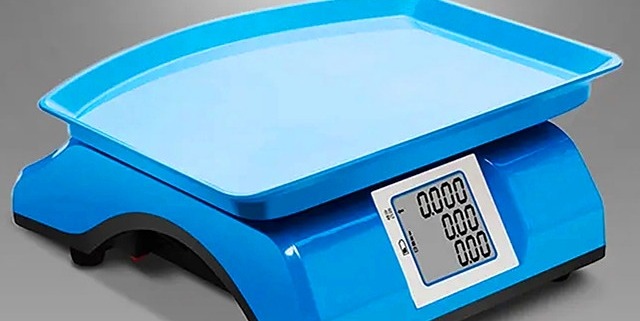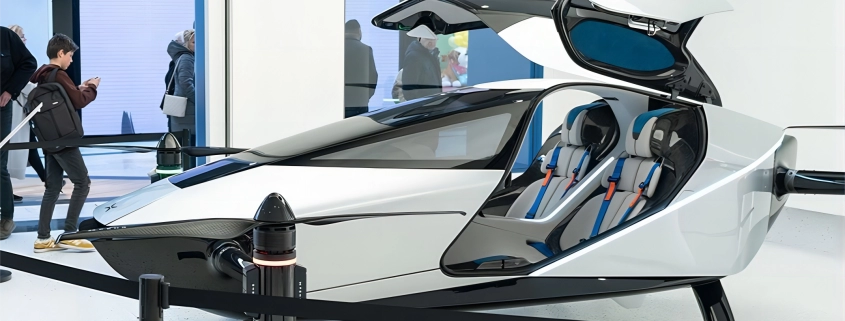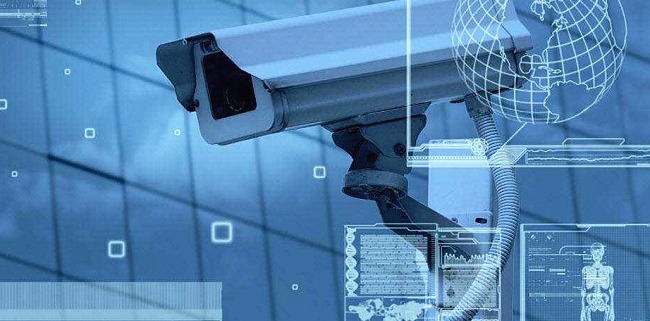Charge a Marine Battery: Step-by-Step Guide
Table of Contents
- Charge a Marine Battery: Step-by-Step Guide
- Understanding Marine Batteries
- Preparing to Charge Your Marine Battery
- Step-by-Step Guide: How to charge a marine battery
- Best Practices for Marine Battery Maintenance
- Conclusion
- FAQ
- Hot Resarch
- Some Notes on Electronic Scales
- China’s Skyward Surge: A Leader in the Flying Car Revolution
- The development trend of security system
Marine batteries are the lifeblood of any boat—they power your engine, lights, gauges, and all the essential onboard electronics. Without a healthy battery, your boat is a pretty shell on the water. In this article, we dive into the burning question: how do I charge a marine battery? We’ll explore everything from the ins and outs of battery types to a step-by-step guide on charging. Plus, we’ll compare the advantages of a marine li ion battery with those of traditional marine deep cycle batteries. Let’s get started on this exciting journey to keep your boat powered and your adventures safe!
Understanding Marine Batteries
1. Types of Marine Batteries
Not all marine batteries are created equal. When it comes to powering your boat, you typically have three choices:
- Starting Batteries: These provide that quick, powerful burst of energy to get your engine running, but they’re not built for long-term power.
- Deep Cycle Batteries: Designed for sustained power delivery, these batteries keep your lights, electronics, and other accessories humming for hours.
- Dual-Purpose Batteries: These offer a blend of starting and deep cycle capabilities, which can be handy on smaller vessels with limited space.
Most boaters prefer marine deep-cycle batteries for extended use and reliability. These batteries handle deep discharges better, ensuring their boats stay powered even during extended trips.
2. Battery Chemistry and Technology
Battery chemistry plays a pivotal role in performance and longevity. Traditional chemistries—like lead-acid, AGM, and gel—have long been the go-to options. However, a modern contender is changing the game: the marine li ion battery.
Why choose a marine li ion battery? Because it’s lightweight, lasts significantly longer, and requires minimal maintenance compared to conventional batteries. Think of it as upgrading from an old clunker to an award-winning sports car in the world of batteries. This cutting-edge technology improves performance and enhances safety and efficiency, making it a popular choice among serious boaters.
Learn more about lithium-ion battery technology on Wikipedia.
Preparing to Charge Your Marine Battery
Before you begin the charging process, a little preparation goes a long way toward ensuring safety and efficiency.
1. Assessing Your Battery’s Condition and Type
First, give your battery a thorough once-over. Check its age, inspect for any signs of corrosion, and verify the battery type. Understanding whether you’re dealing with a marine li ion battery or deep cycle batteries is crucial—it influences which charger to use and how you’ll maintain it. A well-maintained battery lasts longer and performs better when you charge a marine battery.
2. Choosing the Right Charger
Next up is selecting the correct charger. You generally have two main options:
- Onboard Chargers: Permanently installed on your boat, these chargers make it super convenient to power up as long as you have access to a standard outlet.
- Portable Chargers: These allow you to charge your battery wherever you are, which is ideal for smaller boats or when space is at a premium.
Make sure the charger you choose matches your battery’s chemistry and voltage. This step is especially important for those opting for a marine li ion battery or deep cycle batteries—using the wrong charger can lead to underperformance or even damage.
3. Safety Precautions Before Charging
Safety should always be your top priority. Here are some key precautions:
- Work in a Safe Environment: Charge your battery in a well-ventilated area and ensure the temperature is within the manufacturer’s recommended range.
- Clean Battery Terminals: Dirty or corroded terminals can interfere with the charging process, so give them a good clean before you connect anything.
- Gear Up: Wear protective gear such as gloves and eye protection to prevent mishaps.
- Follow Manufacturer Guidelines: Always adhere to the specific recommendations provided by your battery and charger manufacturers.
By taking these simple steps, you will ensure your safety and optimize the performance and lifespan of your battery.
Step-by-Step Guide: How to charge a marine battery
Let’s get into the nitty-gritty of charging your boat’s power source. Follow these steps, and you’ll power up like a pro in no time!
1. Cleaning and Inspecting Battery Terminals
Before you plug anything in, clean your battery terminals. Dirty or corroded terminals can prevent your charger from doing its job, and no one wants a slow charge on a hot day!
- Tip: Mix some baking soda with water, scrub gently with a soft brush, and wipe dry.
- Why It Matters: Clean connections ensure that every bit of energy flows efficiently when you charge a marine battery.
2. Connecting the Charger
Now, let’s hook everything up:
- Positive (Red) Cable: Firmly attach this to the positive terminal.
- Negative (Black) Cable: Connect it securely to the negative terminal.
Double-check your connections, whether using a smart charger that adjusts the current automatically or a trusty manual charger. This step is vital, especially when working with a marine li ion battery or marine deep cycle batteries. Once the cables are locked in, plug in your charger and power it up. Easy as pie, right?
3. Monitoring the Charging Process
Keep an eye on your battery as it charges—this is where modern tech shines:
- LED Indicators: These give you a quick look at the charge level.
- Smart Apps & Timers: Many chargers have apps or built-in timers to let you know when you’re full.
By actively monitoring, you prevent overcharging and ensure your battery gets the right amount of juice.
4. Disconnecting the Charger Safely
When your battery is fully charged, it’s time to disconnect—but do it safely:
- Unplug the Charger: Always start by unplugging the charger from the wall.
- Remove the Negative Cable: Disconnect the black cable first.
- Disconnect the Positive Cable: Finally, remove the red cable.
Following this order helps prevent accidental short-circuits and keeps your battery in shape.
Best Practices for Marine Battery Maintenance
Regular maintenance keeps your battery performing like a champ. Here’s how to keep those power levels up!
1. Maintenance Tips for Prolonging Battery Life
- Routine Inspections: Check for any signs of corrosion or wear on the terminals.
- Clean Regularly: A little cleaning goes a long way in ensuring your connections are solid.
- Water Topping: Top up with distilled water when needed for lead-acid batteries.
By following these habits, you’ll always be ready to charge a marine battery and hit the water confidently.
2. Optimizing Charging Cycles
Different batteries have different needs:
- For a marine li ion battery: Enjoy the benefits of minimal maintenance and the ability to handle deeper discharges.
- For marine deep cycle batteries: Stick to regular, shallow discharges to keep them healthy over the long haul.
Tailoring your charging cycle to the specific battery type maximizes performance and extends lifespan.
3. Troubleshooting Common Issues
Even the best-maintained batteries can run into issues. Watch out for:
- Overcharging: This can overheat your battery and cause damage.
- Undercharging: Leaves your battery underpowered.
- Terminal Corrosion: Hinders efficient energy transfer.
If you notice any problems, check your charger settings and ensure you use the right equipment for your battery type.
Conclusion
1. Recap of Key Points
We’ve broken down how to charge a marine battery step by step—from cleaning and connecting to monitoring and safe disconnection. Each stage is crucial for keeping your boat’s power system in peak condition.
2. Final Tips for Maintaining Both Marine li ion battery and marine deep cycle batteries
Whether you opt for the cutting-edge marine li ion battery or the reliable marine deep cycle batteries, proper care and regular maintenance are your best friends. Tailor your charging habits to your battery’s specific needs, and you’ll enjoy award-winning performance on every trip.
3. Encouragement to Follow Best Practices for Reliability on the Water
Stick to these best practices, and you’ll be cruising with confidence. Keeping your battery in prime condition means fewer hassles and more time enjoying your time on the water. Let’s keep those adventures rolling, shall we?
For more detailed battery care tips and industry insights, check out reputable sources like the U.S. Department of Energy or Wikipedia’s battery technology page. Happy boating!
FAQ
1. Can you charge a marine battery with a regular charger?
While you technically can, it’s not recommended. Marine batteries require a charger that matches their specific chemistry and voltage. A regular charger may not provide the proper charging profile, leading to undercharging, overcharging, or even damage over time.
2. What is the best way to charge a boat battery?
The best way is to use a charger specifically designed for your battery type. Follow a step-by-step process: clean and inspect the terminals, connect the positive and negative cables correctly, monitor the charging process using bright indicators, and disconnect safely when fully charged. This ensures efficiency and longevity.
3.What kind of charger do I need for a marine battery?
You need a charger that is tailored to your battery’s chemistry—whether it’s a marine li ion battery or marine deep cycle batteries. Look for chargers with the correct voltage, charging algorithm, and safety features like automatic shut-off and intelligent monitoring for optimal performance.
Hot Resarch
Marine Battery Battery Manufacturer Lithium Battery
Hello
(1) The electronic scale should be used in a ventilated and dry environment. The temperature should not be too high or too low. The service life is determined by the characteristics of the sensor, the characteristics of the electronic components and the characteristics of the plastic shell.
(2) The electronic scale can only be used after the power switch is inserted for 2~3 minutes.
(3) The shell and buttons of the electronic scale should be kept clean. Because any oil pollution will affect the normal service life.
(4) When using the electronic scale, keep the four corners of the scale body stable and as level as possible. In this way, it can weigh accurately and respond quickly. Because the sensor is in stable vertical force, the output signal is the most accurate.
(5) When the electronic scale is weighing, do not place objects that exceed the rated mass on the weighing pan. Because this will shorten the service life of the sensor, let alone slam the sensor.
(6) The sensor connection line of the electronic scale shall not be lengthened by itself, so as not to affect the accuracy of the scale.
1. HD application
In recent years, “HD whirlwind” has become a popular word in the entire security system, and the concept of HD is also deeply rooted in the hearts of the people. With the high-definition concept proposed by relevant monitoring manufacturers, this is not only a single security product, but a complete set of novel and complete solutions to be applied in the security system. High-definition technology has no related technical problems, but the manufacturers that can provide this complete set of solutions are still relatively limited. In the monitoring industry, this overall solution mainly promotes related high-definition solutions, such as safe cities and intelligent transportation.
For the high-definition industry, the price of lenses is often relatively high, and the compatibility of multiple manufacturers often has certain problems, so there are certain problems in the overall system requirements of users. Therefore, there are certain deficiencies in the high-definition security system in practical applications. . However, there are also many successful application cases of high-definition monitoring systems in the market, especially for some special industries. This is the local use of high-definition cameras in limited high-end fields. Although the publicity of high-definition security systems is relatively hot, there is still a problem of insufficient market share. However, with the advancement of technology, the increase of investment in the high-definition market by various manufacturers, and the continuous popularization of relevant standards and norms, we believe that more and more social enterprises and institutions will adopt high-definition cameras, and the high-definition industry will develop by leaps and bounds development of. On the one hand, with the increase in the demand for security systems, people’s security awareness continues to increase, and the demand for high-end security systems in the civilian market will also continue to increase. Therefore, considerable HD demand will appear in the field of civilian monitoring.
2. Internet of Things
For a wide range of Internet of Things, its application in the security industry can be said to be like a duck to water. It can be applied to the Internet of Things in various security fields, such as public safety, environmental protection, intelligent transportation, elderly care, intelligent fire protection, industrial testing and so on. This also shows that one of the important fields of IoT applications is the security field, and the pace of IoT entering the security field is moving forward rapidly.
(1) The Internet of Things and Intelligent Transportation
The Internet of Things plays a significant role in the “new generation of intelligent transportation”. With the rapid development of 3G and logistics sensing technology, wireless sensors combine with relevant embedded technologies, and integrate short-range wireless communication technology and microelectronic sensor technology. play an important role in data collection. For the intelligent transportation system, the vehicle speed, distance and other information in a fixed area are collected regularly through the non-contact geomagnetic sensor. For the terminal node in the system, when the vehicle enters the monitoring area of the relevant sensor, important information such as the driving speed of the relevant vehicle can be collected by the magnetic sensor, and the relevant information can be transmitted to the next awakened node at the same time. In this way, after the next node collects the relevant information of the vehicle, the average speed of the vehicle and other important information can be estimated. In this way, the information of multiple terminal nodes can be aggregated to the gateway node. Under the processing of data fusion, the information of the road and vehicle flow can be obtained, which can effectively help the traffic signal control at the intersection. In addition, important information such as road surface status, vehicle exhaust pollution, and visibility can also be obtained through different types of sensors installed on terminal nodes, such as humidity, gas detection, and illuminance.
(2) Internet of Things and Smart Home
With the help of the Internet of Things, automated homes can help building owners save time and provide a more energy-efficient and convenient lifestyle for the entire family. The so-called smart home is the use of advanced computer network technology, integrated wiring control technology, etc., and the use of automatic control to organically combine the related systems of home life to provide a convenient life for the owner. For example, the curtains in the home will be closed at a fixed time every night. Through the control panel by the bed, the lights or other electrical appliances in the room that need to be turned off can be automatically controlled before falling asleep, and the security system should be automatically set to the alert state. When you are on your way home, you can automatically control the air conditioner or water heater through a text message, and automatically allow the rice cooker to cook and prepare for you.
(3) Internet of things and security protection
The Internet of Things is more widely used in building security. The Internet of Things security technology can be used on the new security window. This new security window is basically invisible at a distance of 15 meters. This is the difference from the traditional security window. When you get closer, you can find a thin net covering the window. Basically composed of 5 cm thin steel wires, these sensing lines are connected to the monitoring system of the community. In this way, the steel wire will directly alarm the security system after being interrupted or subjected to a strong impact. In addition, this new type of anti-theft window can also improve the escape ability of residents from the perspective of fire protection, and it is easier to obtain rescue.
In addition, for the intelligent residential security system, using the existing network interconnection technology, coupled with advanced intelligent image analysis technology, sensor technology, etc., can carry out important work in access control and community unit video photography, which can meet the needs of access control management and The docking of the public security management platform. Here is an example of a fingerprint lock application for a brief description. Among them, among the front-end identification technologies of radio frequency access control, which account for more than 90%, “biometric identification” is more and more widely used in some key places. Among them, “fingerprint” identification accounts for more than half of the biometric identification methods. On the one hand, the high-tech electronic smart lock does not affect the appearance, on the other hand, it is more conducive to meet the requirements of fire prevention and theft. The circuit and the mechanism are the two parts of the fingerprint lock. It has fingerprint collection and recognition, and is functionally verified through the electronic module. At the same time, it cooperates with the high-performance security features of the high-precision mechanical lock cylinder. Password unlocking is also often a feature of fingerprint locks, and the key unlocking function is retained, which can handle individual cases where the electronic function fails.
3. Civility
At present, civil security has developed rapidly in the entire security industry, and the market is huge. Related to the civil security market mainly includes video surveillance, smart access control, smart home and anti-theft alarm and so on. The areas involved mainly include community security, entertainment monitoring, network monitoring of small chain stores, network monitoring of small and medium-sized shops (retail, convenience stores, etc.), as well as network video control of personal homes, etc. With the continuous improvement of people’s living standards and the gradual strengthening of placement awareness, the application scale of the civilian market of security products is getting larger and larger.
The fields of anti-theft alarm and building intercom are the current scope of application in the field of civil security. This simple, convenient and low-cost future anti-theft alarm device should have greater product functions and functions. The use of intelligent security systems is not only a single product, but should be combined with smart home, security care and other aspects. be the solution for the entire system. but. In the next few years, the market position of civil security systems is bound to rise further.






